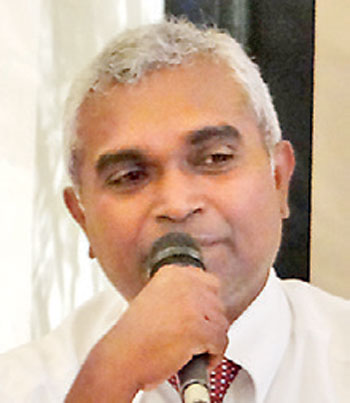20 Jul 2017 - {{hitsCtrl.values.hits}}
By Chandeepa Wettasinghe
The proposed electricity cost-reflective formula would create transparency and public pressure, which could lead to more efficient management within the Ceylon Electricity Board (CEB) and potentially reduce the electricity costs by 5 percent, a leading energy sector expert said.
Under the International Monetary Fund (IMF) reform programme, a cost-reflective electricity pricing formula is envisioned to cut down the CEB losses, which were Rs.14.50 billion in 2016 and Rs.16.59 billion in the first four months of 2017.

RMA Energy Consultants Managing Director Dr. Tilak Siyambalapitiya told Mirror Business that the cost-reflective pricing formula has to be implemented concurrently with the management reforms in the CEB, when asked if the inefficiencies within the CEB will balloon up the electricity prices further, following the implementation of the formula.
“If professional decisions are allowed, if the CEB is allowed to be professionally managed, then instead of the Rs.28 billion projected loss, the CEB will make Rs.13 billion profit-before tax in 2017. In other words, if the government or the IMF says we do not need profits, then today’s electricity prices can be reduced by 5 percent and the CEB made fully viable,” he said.
He noted that currently, the Sri Lankan consumers are not aware of the hidden costs of the CEB due to its inefficiencies in supply and administration, including overcompensation and overstaffing, which are covered through subsidies by large-scale industrial and commercial clients and government guarantees.
“So the government subsidizes, sooner or later. They let the subsidies promised to accumulate for several years, shown as accumulated losses of the CEB and then make a huge noise that the CEB is making losses, then off-load the debts,” Dr. Siyambalapitiya added.
He said that the debt burden is then borne by the consumers through taxes. Given Sri Lanka’s tax structure, which is largely indirect, all sections of society have to contribute towards this.
“Only by pricing electricity at what it costs and being full transparent about any targeted subsidies, can the CEB inefficiencies and the government’s undue interference be highlighted” Dr. Siyambalapitiya said.
A better informed society could put pressure on the government and the CEB to become the leaner and meaner in its management, following the implementation of the formula, which will provide a breakdown of costs, according to Dr. Siyambalapitiya.
“When a customer takes a bill, he can now compare and ask, ‘Why has the generation energy cost gone up? Why has the distribution cost gone up?’ and demand answers,” he said.
Sri Lanka’s electricity costs are considered one of the many reasons for the lack of both local and foreign investment into foreign exchange earnings industries.
A large-scale commercial venture in Sri Lanka would be charged Rs.23.65 per unit, while in competing foreign direct investment destinations such as Vietnam and Bangladesh, the price is Rs.14.01 and Rs.14.46, respectively, according to RMA Energy Consultants data.
A very large industrial unit will be charged Rs.15.19 per unit in Sri Lanka, while getting charged Rs.9.42 in Vietnam and Rs.14.46 in Bangladesh.
Further, such operations in Sri Lanka have to subsidize small and medium-scale power-consuming households, which make up a significant portion of the country’s electricity demand.
The formula was initially supposed to be implemented in December 2016, although this March, the then Finance Minister Ravi Karunanayake had said that a formula, which had been developed, was not satisfactory and that a new one was being prepared.
The IMF, when approving the delayed tranche of balance of payments support this week, reminded the government to implement cost-reflective formulae for energy supply.
At a recent public consultation on the government’s power generation plans, experts said that country’s power grid is fragile due to with numerous weather-related supply-side disruptions and the lack of redundancy, which forces the government to choose costlier generation options, putting a greater burden on the people.
09 Jan 2025 49 minute ago
09 Jan 2025 1 hours ago
09 Jan 2025 1 hours ago
09 Jan 2025 2 hours ago
09 Jan 2025 2 hours ago